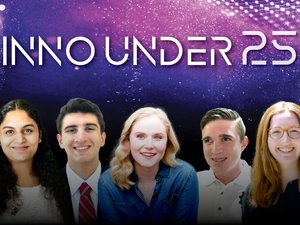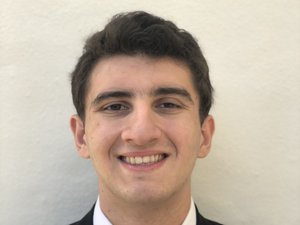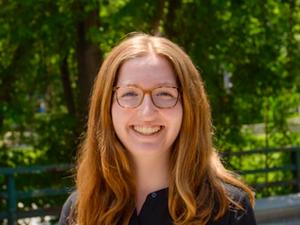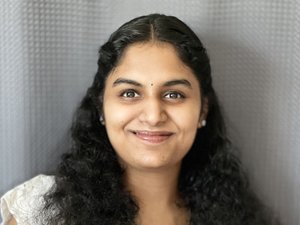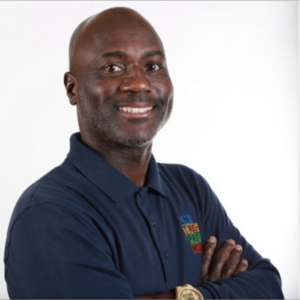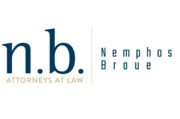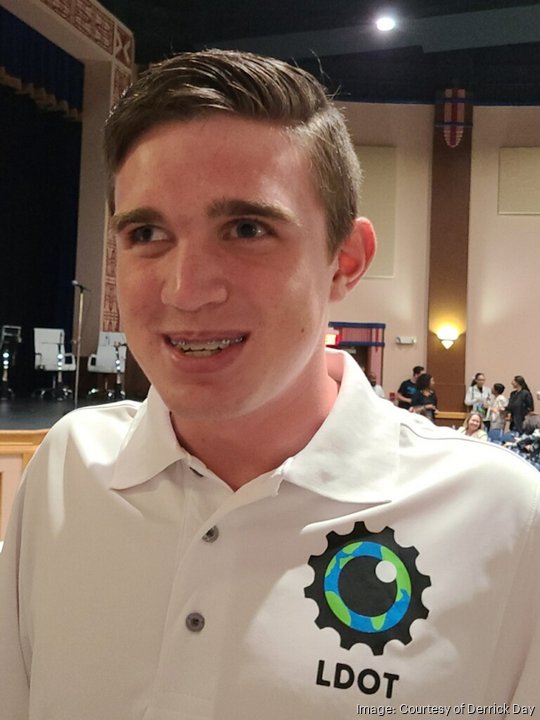
Derrick Day
Title: Founder, LDOT
Age: 17
Derrick Day is trying to take an innovation that he created to make his own daily life easier and use it to help people with visual impairments.
Day, who is blind, won $10,000 from the Carroll Biz Challenge this year for his vision assistance startup LDOT at the age of 17.
The LDOT mobile application uses artificial intelligence to identify objects, such as furniture or obstacles outdoors, in a phone camera. The app uses voice-over software to describe the room around a user so they can navigate the area without entirely relying on the use of a cane or other tools. Day was born with a degenerative eye condition that caused his vision to deteriorate to total blindness and uses the app to complete tasks beyond what he could safely accomplish with his cane. He uses the app to do everything from roller skate to swim underwater.
Westminster High School teacher Emily Brynes quickly saw the business potential in Day's creation and encouraged him to apply to the Carroll County startup competition. Day plans to launch the application on mobile devices by early 2024.
How did you first come up with the idea for LDOT?
As a high school student, I was offered a principles of business management course. As part of that course, we were asked to plan a hypothetical company to apply and refine our skills we were learning. Everything from management structure, to expenses, to employees were considered in the plan.
LDOT started as my hypothetical business, but after the market research portion of the project I heard about how helpful it could be to many, many people, and I decided to make it in real life.
What inspired you about that business principles course?
I have always liked the logistical and strategic aspects of business and the concept has always interested me. When I found out I needed a certain amount of electives, I decided to use it as one of them because it would be fun and interesting. Now knowing what the class has brought me, I am extremely thankful I made that decision.
Ms. Emily Brynes has been extremely helpful throughout the process. For one, she is a very business-savvy person who has led me through a lot of the hoops when it comes to filing things, laying out our presentation, and all of the less technological aspects of the process. Getting her on board was extremely helpful because it improved my entire business way above the level to which I could’ve attained myself, but it also allowed me to focus more on my strengths of programming.
How does LDOT’s technology work?
Without getting too specific, LDOT uses neural networks to make decisions on what it thinks are in the images sent to it by the camera. The output of the networks is then processed and interpreted to determine which objects and obstacles are identifiable and of interest, and then that information is sent to the user through vibrations and auditory feedback.
The power of a neural network is that it can withstand a level of uncertainty as a result of its determination. When something is programmed using conventional methods, the result is considered to be absolute. When neural networks do the computation however, a percentage value is returned along with the result, which can be used to determine whether the result is credible enough to use.
What was the hardest part of developing the application?
The most challenging part was getting data to make the artificial intelligence networks. I had to gather information on which obstacles and objects caused hazards, which were more or less encountered, etc. That presented an interesting challenge because a lot of information needed to be gathered from a broad spectrum of people before I could start with the actual crafting of anything technological.
What are your plans after high school? Do you plan on continuing to develop the LDOT application?
I have put a lot of consideration into that question. All of my friends are going to college next year, and originally my plan was to follow them. I have applied for Maryland, and my plans will most likely be determined by the outcome of that application. If I get accepted, I will most likely go there to major in computer science while still continuing LDOT development. If I am not accepted, or LDOT takes off before my course selection deadline, I may defer for a year and see how LDOT matures, possibly taking prerequisites at Carroll.
To read about the rest of our Inno Under 25 class, click here.
